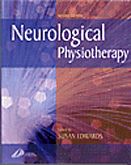Neurological Physiotherapy, 2nd Edition
A Problem-Solving Approach
Date of Publication: 10/2001
Neurological Physiotherapy aims to provide an improved understanding of problems commonly encountered by the therapist working with people with neurological disability. It describes aspects of posture and movement difficulties which may occur as a result of neurological damage and gives guidance to help the therapist to plan the appropriate treatment programme for each patient. Using a problem-solving approach the emphasis is on the identification of symptoms in relation to impairment and disability rather than on a detailed description of neurological conditions.
Neurological Physiotherapy aims to provide an improved understanding of problems commonly encountered by the therapist working with people with neurological disability. It describes aspects of posture and movement difficulties which may occur as a result of neurological damage and gives guidance to help the therapist to plan the appropriate treatment programme for each patient. Using a problem-solving approach the emphasis is on the identification of symptoms in relation to impairment and disability rather than on a detailed description of neurological conditions.
New to this edition
New chapters on:Assessment, goal setting and measuring treatment outcomes Medical and surgical management (including drug therapy) New chapter which looks at the likely developments for the future - a forward outlook More case studies included - with new ones to address CVA, MS (with link to the community) and MND Case studies on spinal cord injury and head injury to be added.
Key Features
Author Information
Edited by Susan Edwards, MCSP, Consultant in Neurological Physiotherapy, London, UK


